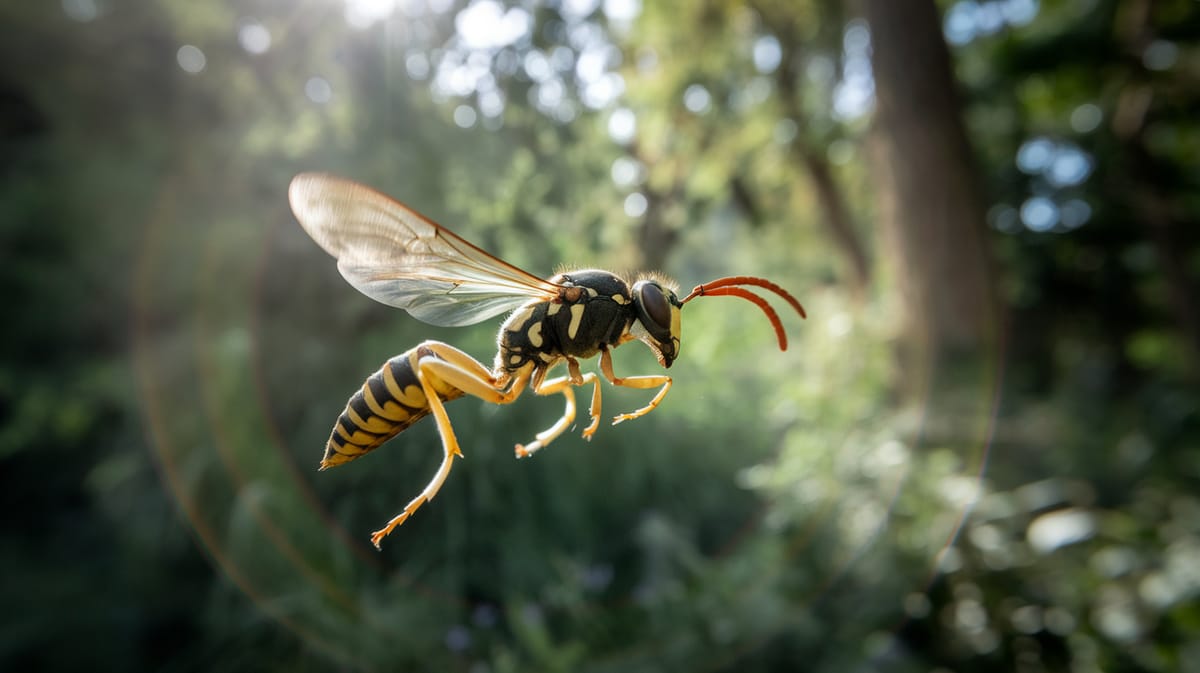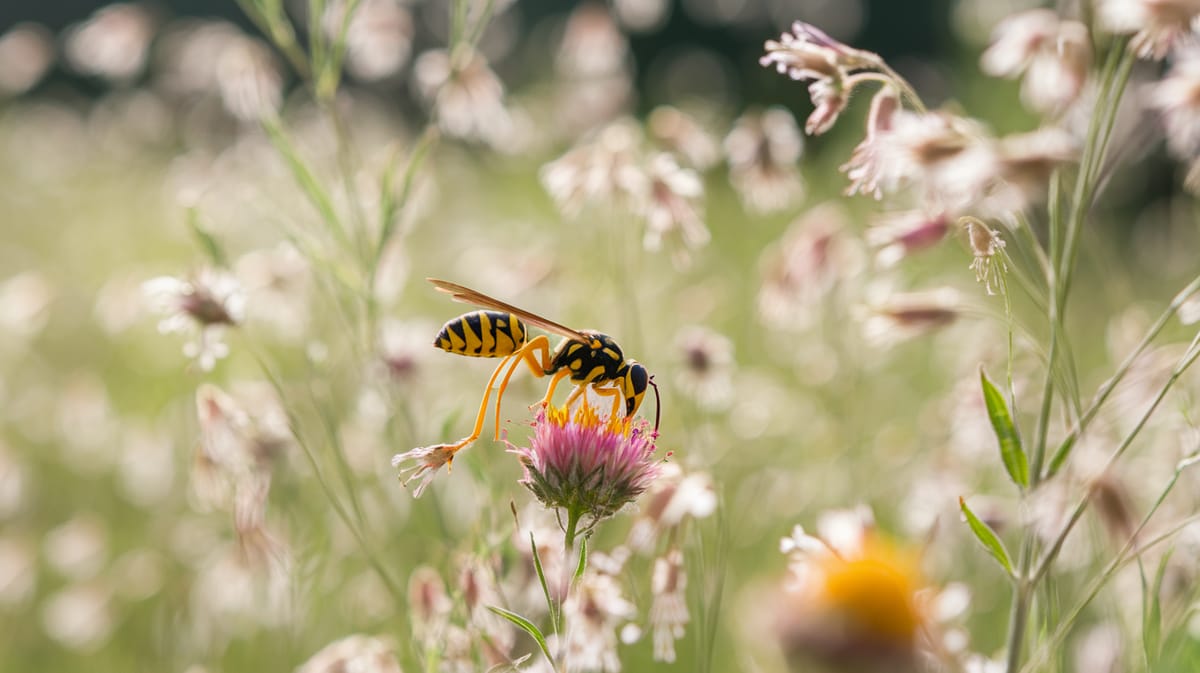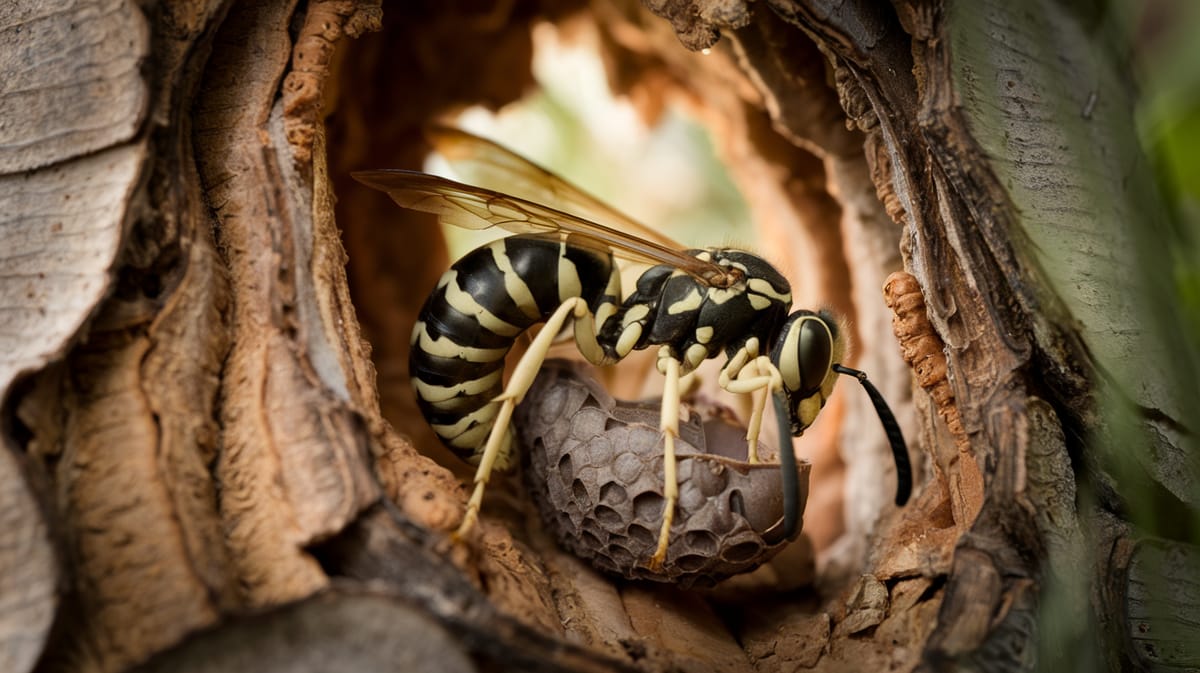Braconid Wasps
Tiny yet mighty, Braconid Wasps are nature's pest controllers, targeting and parasitizing harmful insects with remarkable precision. Their ecological role helps maintain balance in various ecosystems.

Key Insights at a Glance
Did You Know?
Taxonomy & Classification
Braconid Wasps are unique parasitoids known for their intricate life cycles and roles in ecological balance, displaying fascinating adaptations to parasitize other insects. Let's understand the evolutionary journey and classification of these remarkable parasites.
Species Diversity
Comprising over 17,000 species globally, Braconid Wasps exhibit vast diversity, with many yet to be described.
Ancient Origins
Originating in the Cretaceous period, these wasps have evolved alongside flowering plants, adapting to various niches.
Lifecycle and Growth
A remarkable journey of transformation from Egg to Adult.
Egg
Female wasps lay eggs inside or on host insects, initiating the parasitic lifecycle crucial for controlling pest populations.
Larva
Larvae consume host tissues, growing rapidly while remaining internally undetected by the host's immune system.
Pupa
Pupation occurs within or near the host, leading to the formation of adult structures under a protective silk cocoon.
Adult
Adults emerge ready to mate, continuing the parasitic cycle by locating suitable hosts for the next generation.
Dietary Habits
A proficient hunter with specialized parasitic strategies, this insect primarily targets caterpillars, utilizing host manipulation for survival.
| DIET TYPE | DESCRIPTION |
|---|---|
| Primary Diet | Primarily parasitizes caterpillars, injecting eggs into hosts, where larvae consume the host from within. |
| Secondary Diet | Occasionally targets beetle larvae and aphids, adding variety to its diet while adapting to prey availability. |
| Occasional | Rarely consumes nectar as adults, contributing to pollination during infrequent feeding events. |

Behaviour and Adaptations
Discover the fascinating adaptations that enable Braconid Wasps to excel in their ecological niche.
Parasitic Precision
Expertly lay eggs inside host insects, ensuring offspring survival.
Chemical Warfare
Injects venom to paralyze and manipulate host behavior.
Host Specificity
Highly adapted to specific host insects, maximizing reproductive success.
Ecosystem Impact
Braconid Wasps play a crucial role in ecological balance by regulating pest populations and supporting biodiversity.
Natural Pest Control
Targets and parasitizes pest larvae, reducing their numbers effectively.
Biodiversity Support
Boosts diversity by preying on dominant insect species, allowing other species to thrive.
Soil Health Promoter
Contributes to soil health by controlling root-feeding insect populations.
Conservation Challenges
Understanding and addressing the major threats to Braconid Wasps populations.
Chemical Exposure
Pesticides in agriculture harm Braconid Wasps, reducing their populations.
Habitat Loss
Agricultural expansion and urbanization destroy natural habitats of Braconid Wasps.
Climate Change
Altered climates disrupt Braconid Wasps' life cycles and survival.
Frequently Asked Questions
How long do Braconid Wasps live?
Braconid Wasps have a short lifespan, typically ranging from a few weeks to a couple of months. Their lifecycle includes egg, larva, pupa, and adult stages. Environmental factors and availability of hosts can influence their longevity.
What do Braconid Wasps eat?
Braconid Wasps primarily feed on nectar as adults. During their larval stage, they are parasitic and consume the body fluids and tissues of their host insects, which are usually caterpillars or beetles.
Are Braconid Wasps poisonous?
Braconid Wasps are not poisonous to humans. They are beneficial insects, known for their role in controlling pest populations by parasitizing harmful insects. They pose no threat to humans or pets.
Are Braconid Wasps endangered?
Braconid Wasps are not considered endangered. They are widespread and abundant, with numerous species playing crucial roles in natural pest control. Conservation of their habitats helps maintain their populations.
What do Braconid Wasps symbolize?
Braconid Wasps often symbolize control and balance in ecosystems due to their role in managing pest populations. They are seen as beneficial insects that contribute to the natural regulation of agricultural and garden pests.
Do Braconid Wasps bite?
Braconid Wasps do not bite humans. They are parasitic wasps that lay eggs in or on their prey, typically insect hosts. They lack the ability to bite or sting humans and are harmless to people.
What color are Braconid Wasps?
Braconid Wasps are usually black or brown, often with reddish or orange markings. Their coloration can vary depending on the species but generally blends into their natural surroundings.
Does a Braconid Wasps have wings?
Yes, Braconid Wasps have wings. Adult Braconid Wasps possess two pairs of wings, which are transparent and veined, enabling them to fly efficiently in search of hosts for their offspring.
What does a Braconid Wasps look like?
Braconid Wasps are small, slender insects with long antennae. They often have a narrow waist and can vary in color from black and brown to reddish hues, depending on the species. They have transparent wings and are typically less than half an inch long.
Is a Braconid Wasps an insect?
Yes, a Braconid Wasp is an insect. It belongs to the order Hymenoptera, which includes ants, bees, and other wasps. They are characterized by their parasitic lifestyle and play a significant role in controlling pest populations.
Related Insects
Discover insects with similar characteristics to Braconid Wasps - including shared habitats, diets, and taxonomic classifications
Share this profile
Help others discover Braconid Wasps
